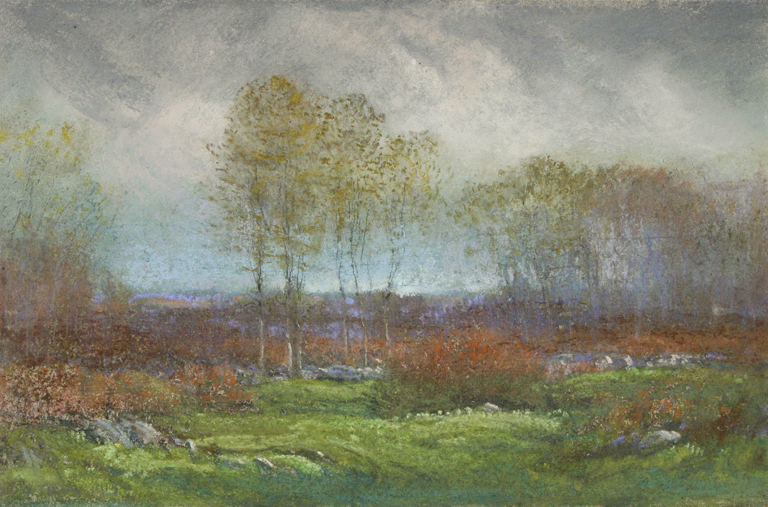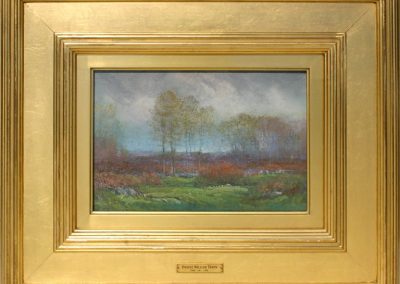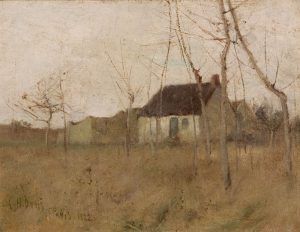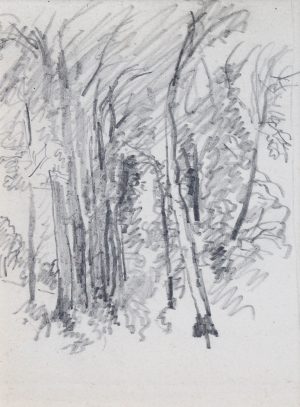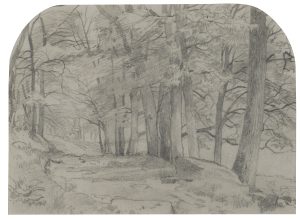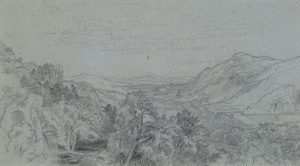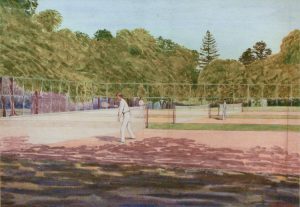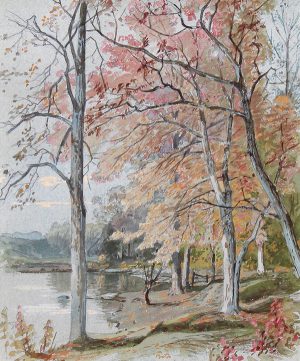Dwight Tryon (1849-1925)
One of America’s first Tonalist painters having been influenced by the Barbizon School of painting in France, Dwight Tryon was also a long-time art professor at Smith College. His characteristic canvases were muted, serene landscapes and seascapes. He applied his own techniques of infused light and atmospheric effects. His work has been described as relaxing to the eye and lacking the urgent vigor of many of his Impressionist contemporaries.
Born in Hartford, CT and raised in East Hartford, Tryon showed early talent but remained initially a self-taught artist. His formal education ended at age fourteen when he began working in a firearms factory to help support his widowed mother. He began painting scenes of New England, often along the Connecticut River, while working in a bookstore.
In 1876, having achieved some success in the marketplace, he sold all of his work for $2000, and he and his wife, Alice Hepzibah Belden, went to France to study art and attend lectures at the Ecole des Beaux Arts. In 1881, Tryon exhibited at the Paris Salon, and that year returned to New York City where he opened a studio and began giving lessons. He earned the life-long patronage of Charles Lang Freer, art collector and railway-industrialist, for whom Tryon did many paintings, including a series of seasonal landscapes for Freer’s Detroit home. As a result, a large portion of Tryon’s work is in the Freer Gallery in Washington DC. Another patron of Tryon was Thomas B. Clarke, the first collector in the industrial age in America to favor American artists over European.
In 1883, Tryon opened a summer studio in Dartmouth, MA, a small fishing village near New Bedford. Many of his works reflect the bucolic landscape of that seaside region.
In 1885, he began his career at Smith College, becoming Director of the Art School from 1903 to 1923. In the 1890s, his style changed somewhat, moving from massy, somber tonalities to a lighter coloration. He also worked more in pastels than oils feeling that pastel allowed him more creative possibilities in the creation of beauty.
Tryon was an exponent of the American Aesthetic movement, committed to the importance of cultivating good taste through beautiful art and through familiarity with quality, original works of art. At Smith College, he spearheaded the collecting of fine art from leading painters of the day. He promoted the purchase of the work of many Tonalist painters including George Inness and Thomas Dewing. Just before his death in 1925, he bequeathed $100,000 to the College for an art gallery, which was designed in Georgian style by New York architect Frederick Ackerman. The building stood until 1970, when it was demolished to make room for a Fine Arts complex, something he likely would have applauded.
October, 1913
by Dwight Tryon (1849-1925)
| Medium | Pastel |
| Medium Detail | Pastel on paper |
| Dimensions | 8 x 12 inches; Framed: 17 x 21 ¼ inches |
| Signed Location | Signed and dated, lower left; Signed, titled and dated on verso |
| Date Created | 1913 |
1 in stock
Contact Us About This Piece

